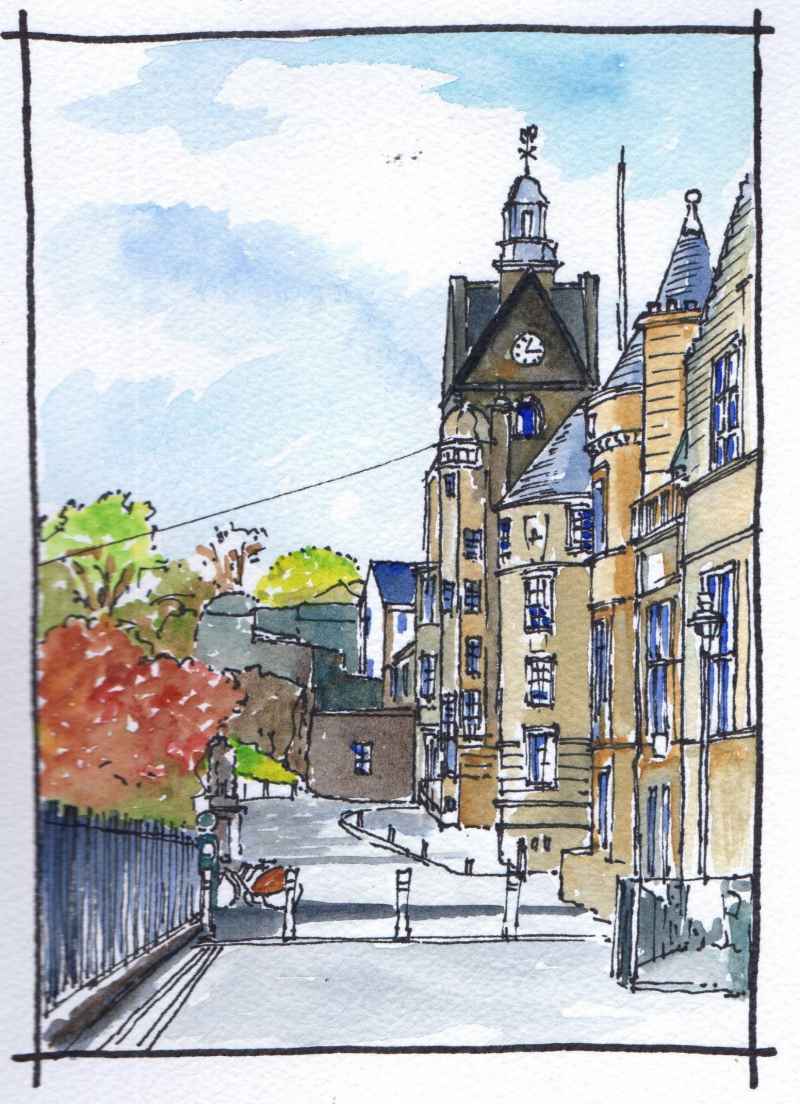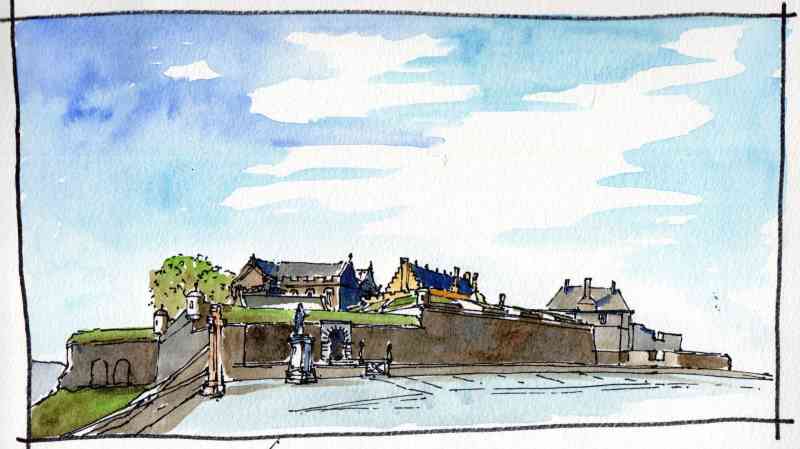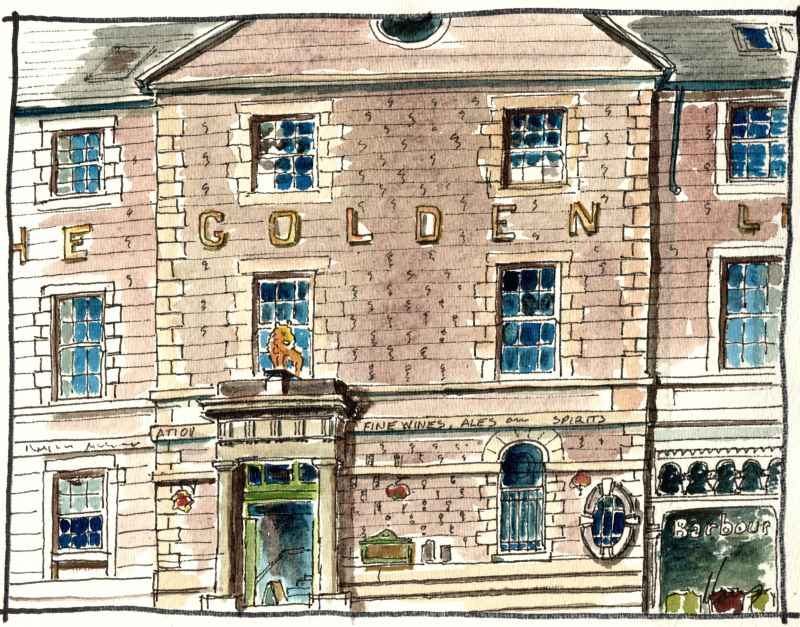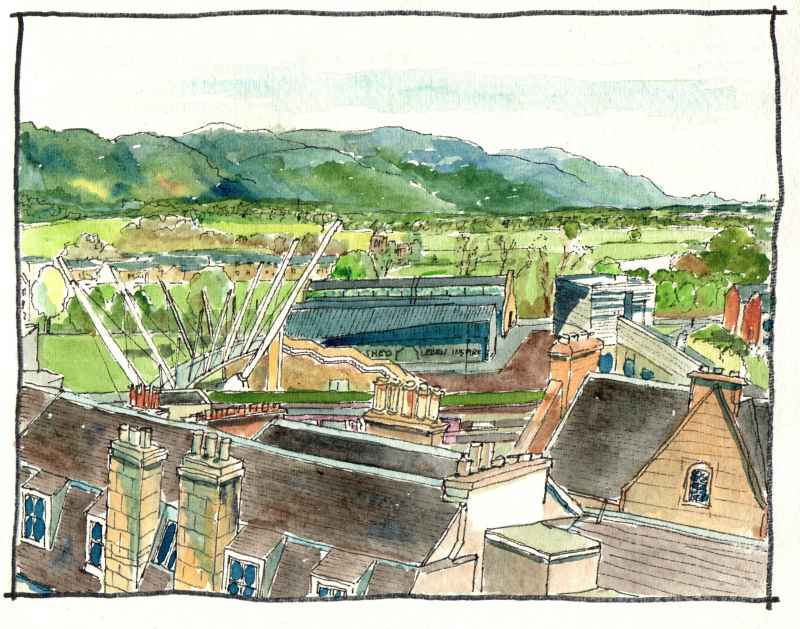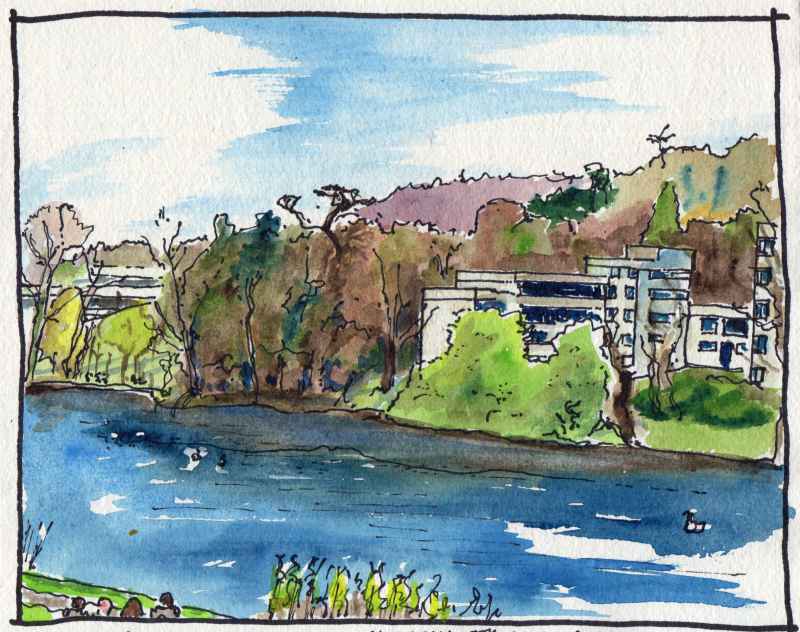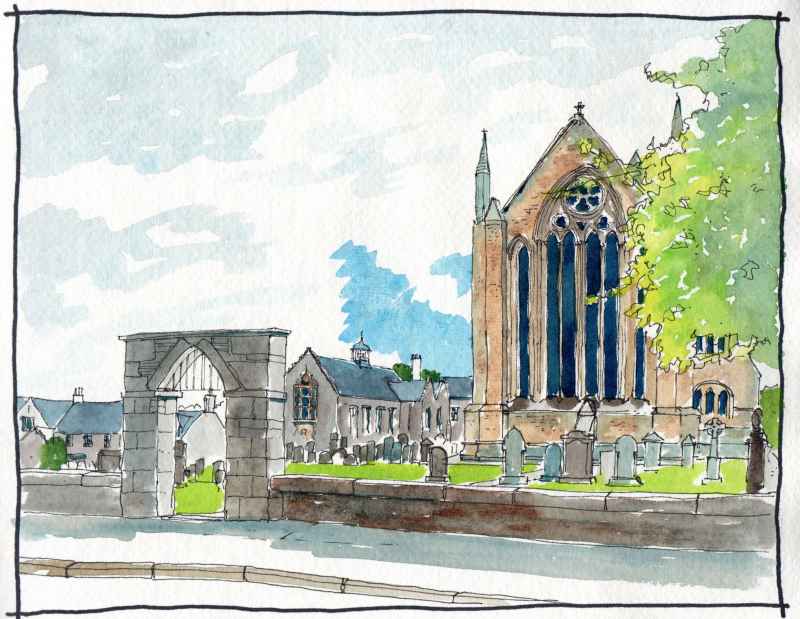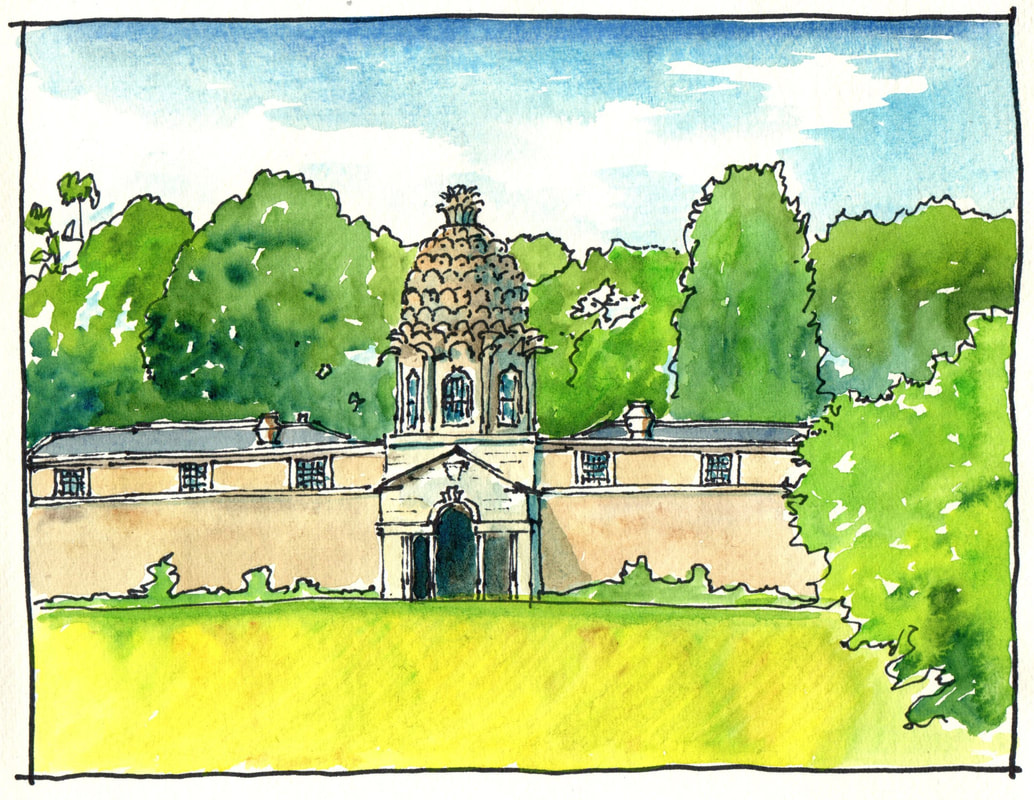Stirling lies in the lowlands of Scotland aproximately half way between Glasgow and Edinburgh. Like Edinburgh it has a steep main street rising to a castle which dramatically overlooks flat land around. Closly associated with the Scottish Kings it is a place of great character and history.
|
The town walls of Stirling, Scotland, dating from circa 1547, remain in part along the south west side of the historic settlement. In this view along the ‘back walk’ they have been interupted by a range of enthusiastic Edwardian public buildings in the baronial style with crow stepped gables, turreted towers and heraldry. These are the Central Library of 1904 (nearest) and the Muncipal Buildings of 1914 with its tall clock tower.
Stirling Castle, at the top of the hill, is protected by much more sophisticated and intact defences. Low thick walls built to withstand cannon fire have projecting bastions for flanking fire to ensure that its entrance is well defended from the town. These defences were added between 1708 and 1714.
The Golden Lion Hotel, Stirling. Comissioned by James Wingate, a Stirling business man, and said to have been designed by the architect Gideon Gray , the hotel opened in 1786 on the site of a former tavern. Robert Burns stayed here in 1786 and scratched a poem on the window of his room but is said to have come back later and smashed it becuase of its anti - royalist sentiment. Alterations to the front at ground level were carried out in the early 19th century and a significant remodleling and rebuilding of the interior and rear extension was carried out in the late twentieth century. Today, the hotel retains much character and is worth a visit.
The Engine Shed in Stirling, sketched from the Golden Lion Hotel. The Shed was comprehensively renovated and extended in 2017 and now houses Historic Environment Scotland’s ‘dedicated building conservation centre’ and as well as a good shop and exhibition space. It hosts many talks and events aimed at professionals and the public year round. Well worth a visit if you are ever in the area.
Dunblane Cathedral, Stirlingshire, is one of the few medieval cathedrals of Scotland to have remained in use. Commenced in the 12th century, most of the current building dates from the 13th century. After the Reformation services were conducted in the chancel and the nave became unroofed and remained this way for 300 years. The roof was restored in the late nineteenth century (1889) by Sir Robert Rowand Anderson. John Ruskin wrote of it in 1853 “I know not anything so perfect in its simplicity and so beautiful, as far as it reaches, in all the Gothic with which I am acquainted”. It is indeed an elegant building particularly its east gable shown here. This dates from the fifteenth century with nineteenth century tracery and has a power in its simpicity that makes it very special. It is complemented by a low scale cathedral close around the graveyard and the cathedral hall. This was designed in the seventeenth century scottish style with crow stepped battlements and an ealborately decorated east window but was in fact constructed in 1903. It was designed by Anderson as well.
The Pineapple was built in 1761 by the Earl of Dunmore as a summerhouse overlooking the walled garden of his estate. It must be one of the most unusual follies in the UK. Designed on classical principles yet surmounted by a convincing stone replica of the fruit, it is said to have been chosen because of the rarity of pineapples at that time. Clearly it was designed to be an exotic and very special place. 250 years later it could still be described in the same way. The building is maintained by the National Trust for Scotland and is located above the valley between Stirling and Glasgow. The entrance up an overgrown lane just adds to the power of this incredible place within the woods. It is well worth a visit.
|
|

